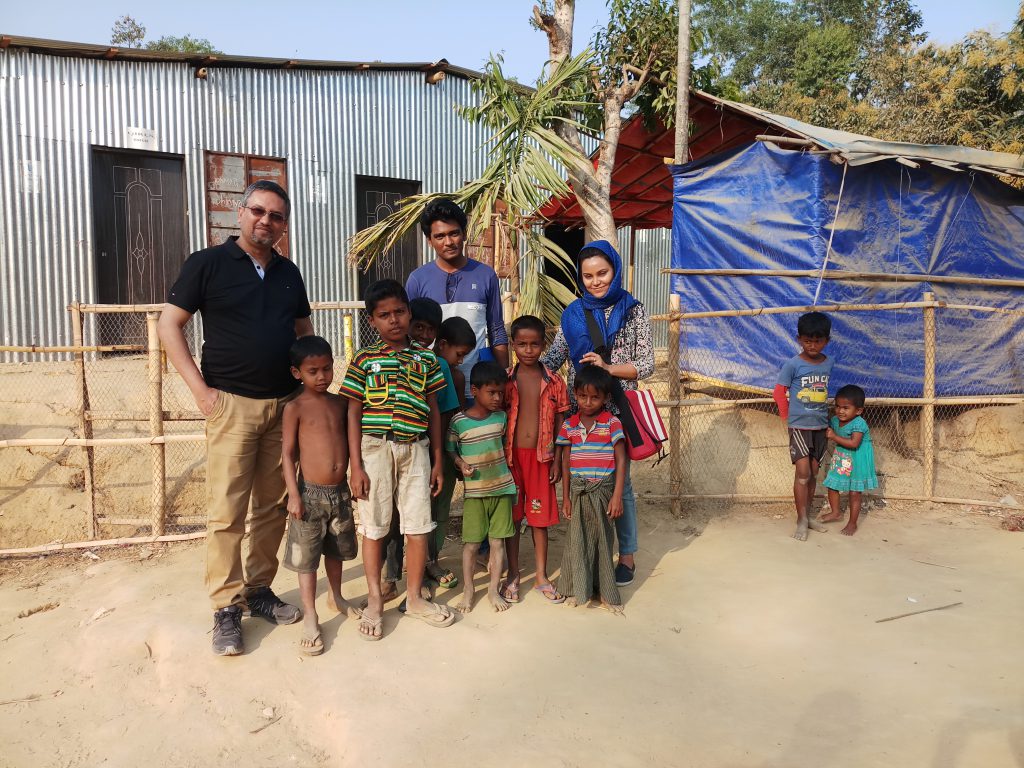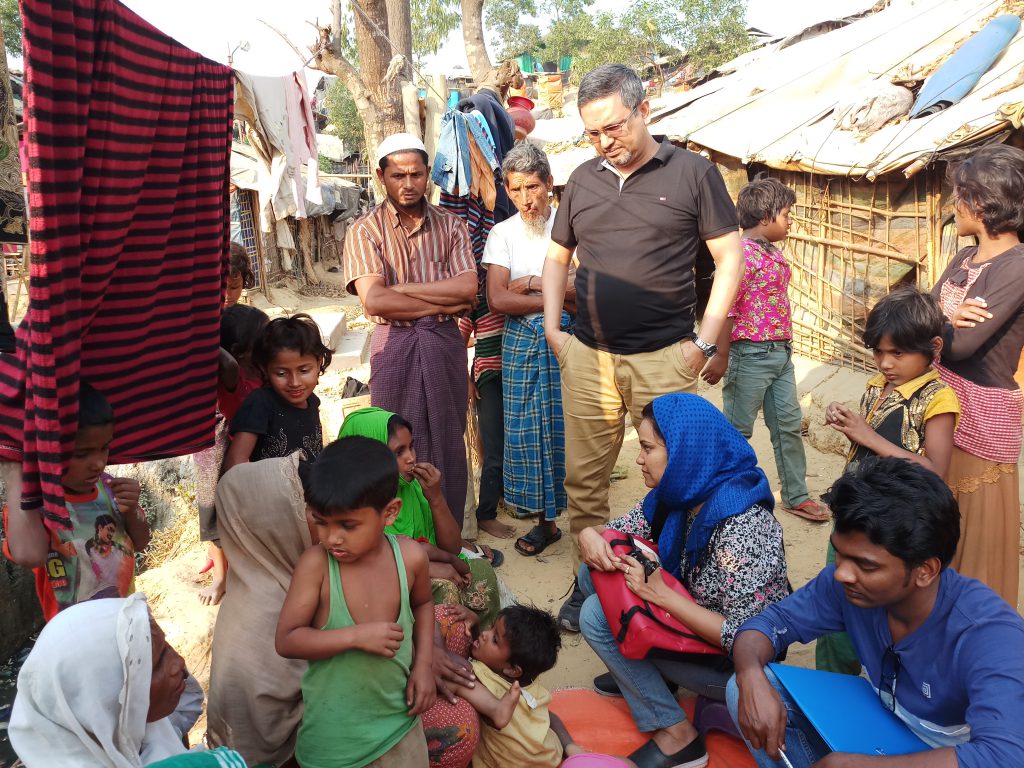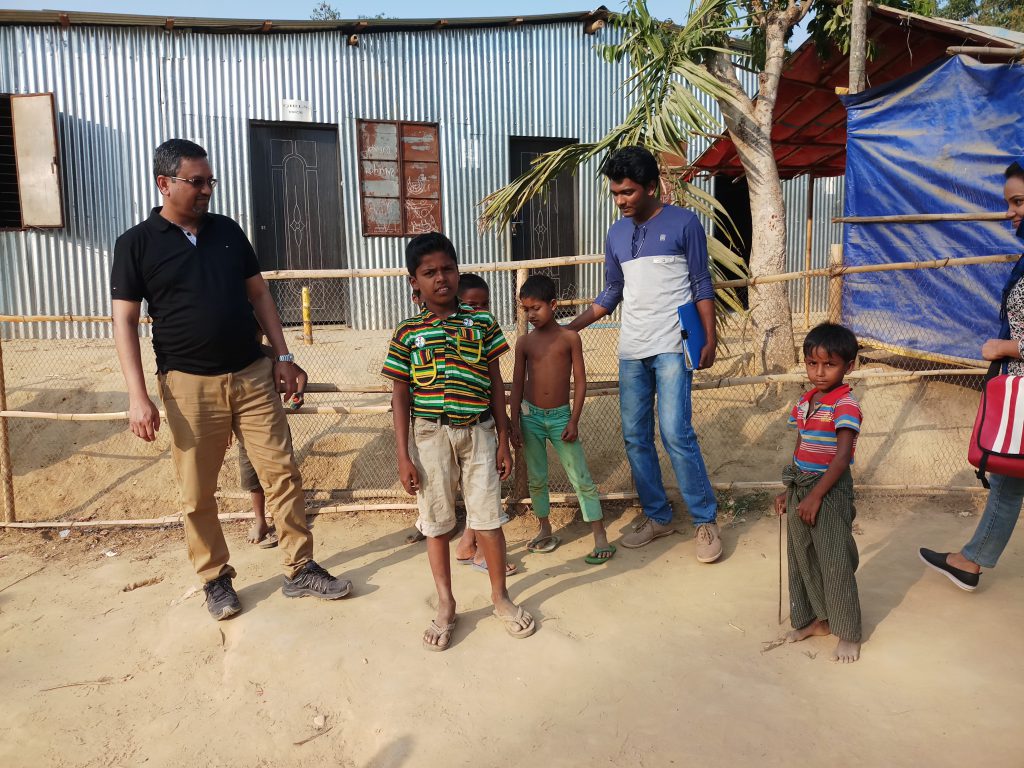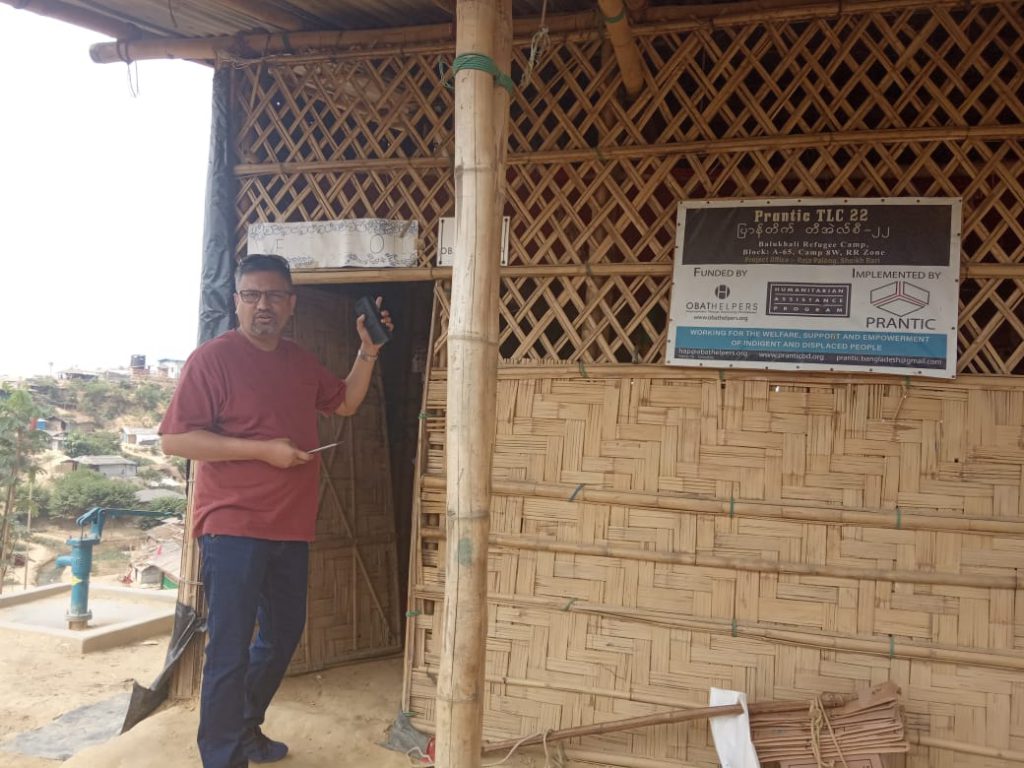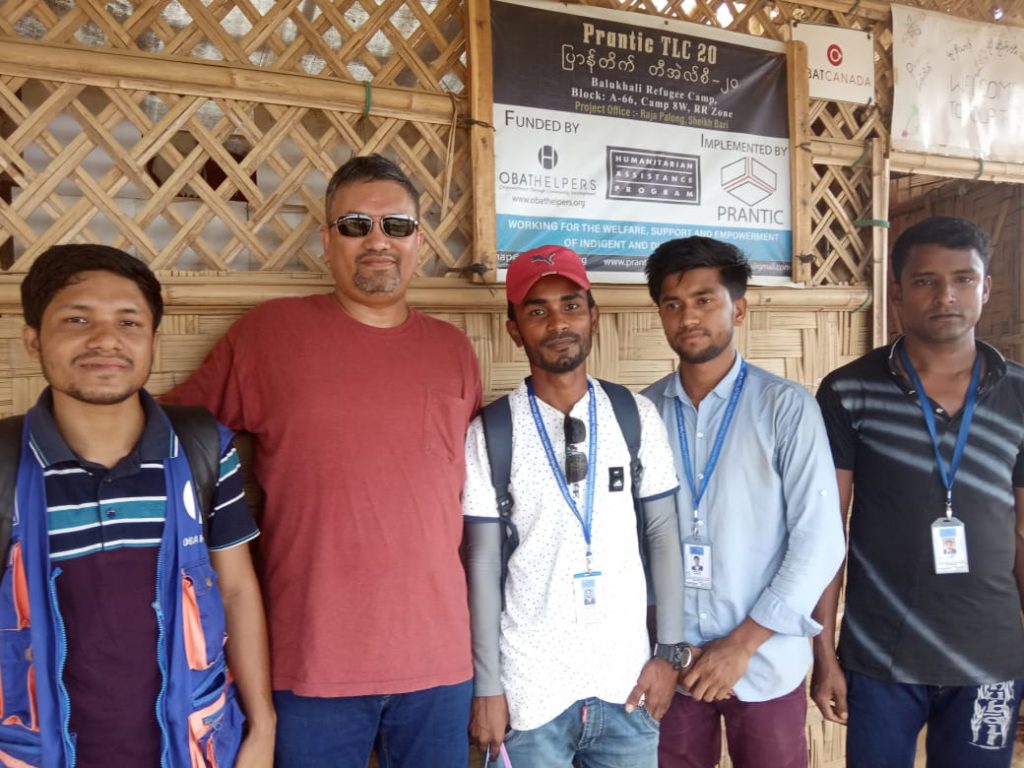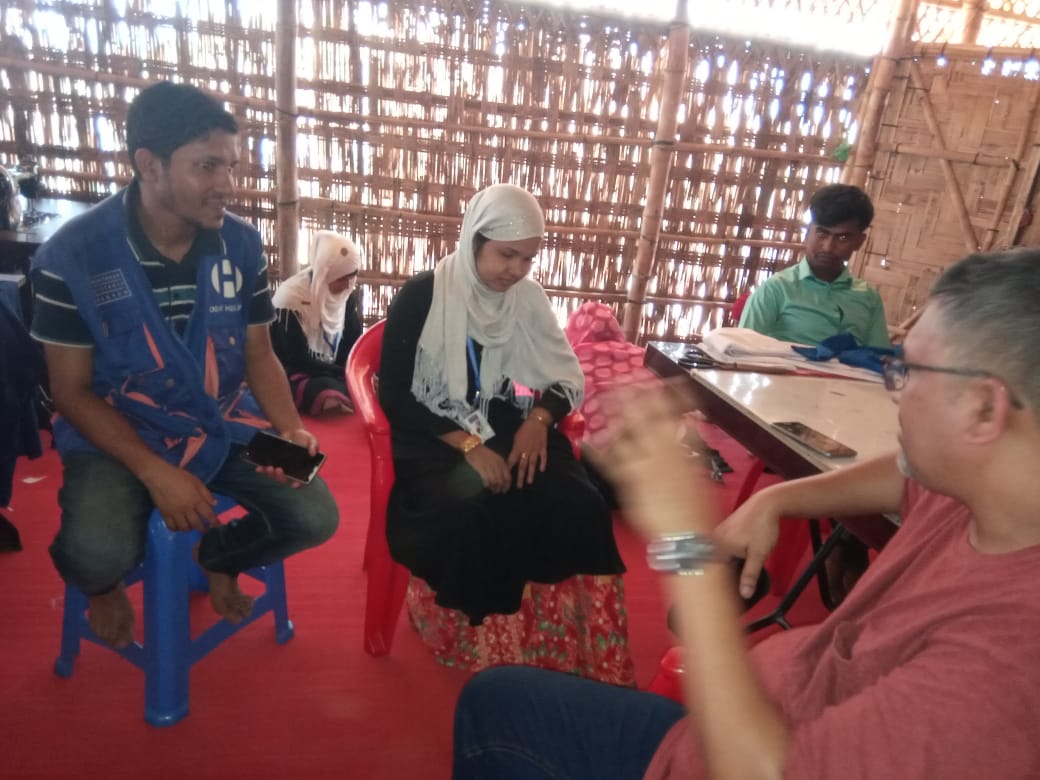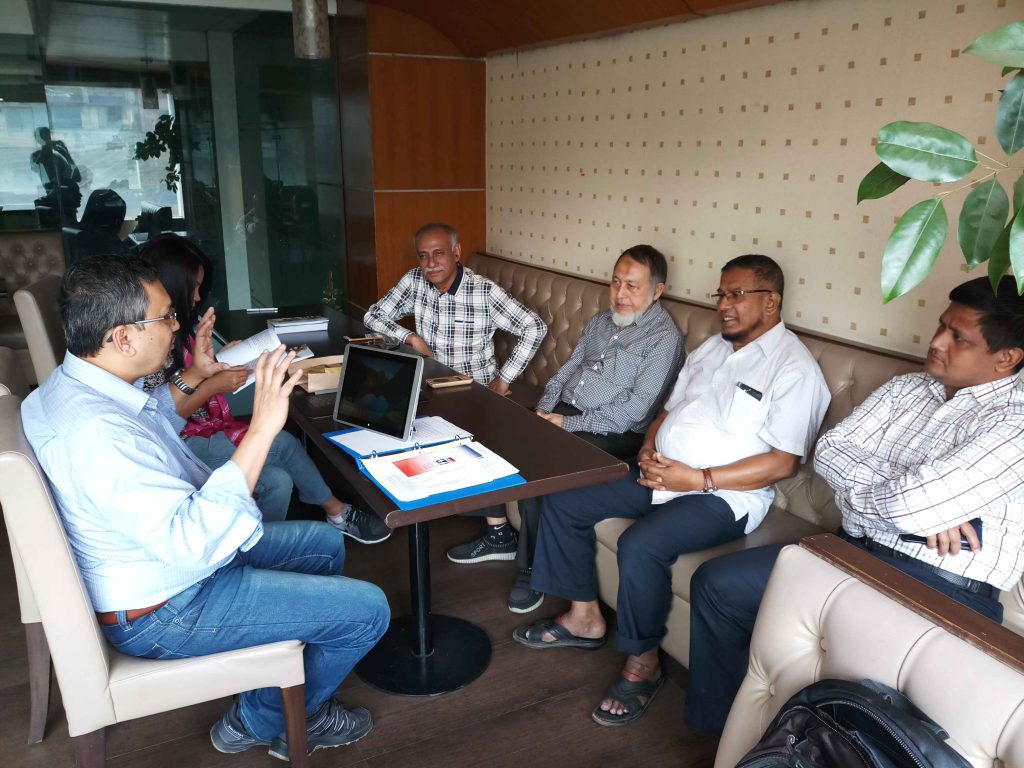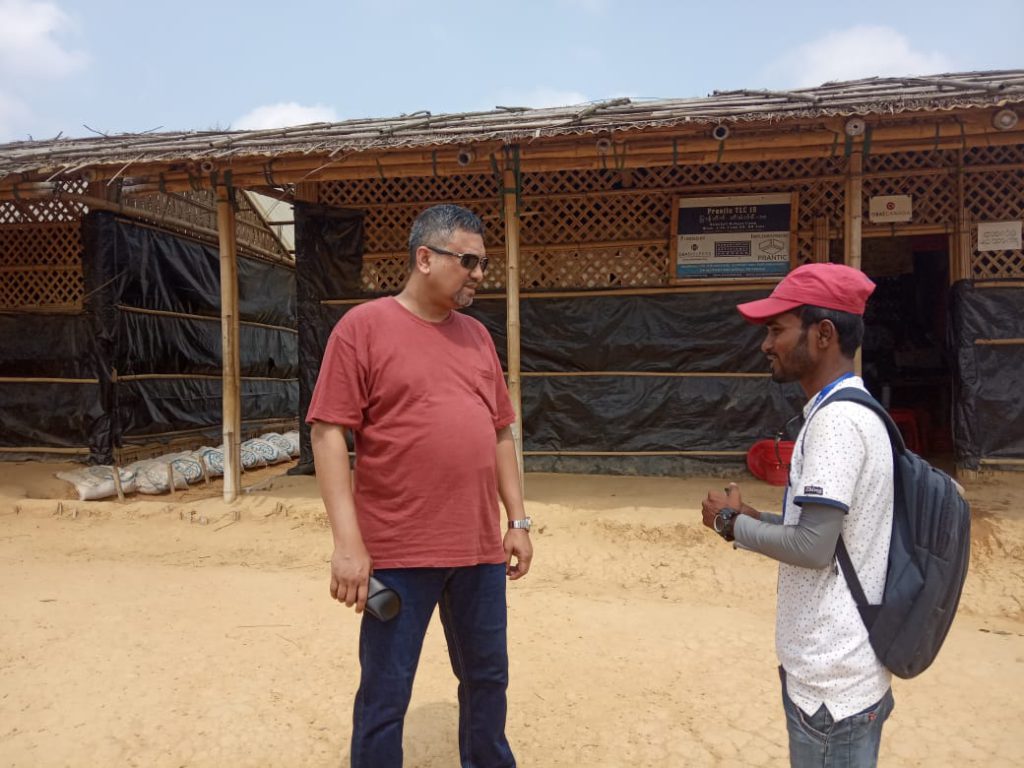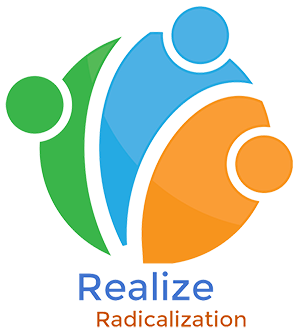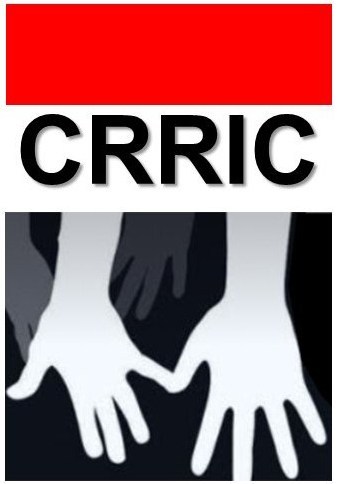(A Rotary club of Winnipeg supported Global Grant Project)
BACKDROP
More than 400,000 of one million registered Rohingyas sheltered in Bangladesh (including over 738,000 who have come since August 2017) are under-18 school-age children. They are sheltered in eleven camps, located in two upazilas (Ukhia and Teknaf) of Cox’s Bazar district, Bangladesh. Some of them accompanied their parents; some only had a single parent, while some were orphans. Since their arrival, about two-thirds of the younger children have received some non-formal education through local and international NGOs. Yet more than 90% of the 117,000 adolescent children, especially girls, have been left out. Equitable access to basic education and skills training in safe spaces within the camps is a human right of the female adolescents. It would raise their capacity for better-paid and more meaningful, income-generating or employment opportunities, thereby benefiting the girls themselves as well as their families, giving them a hope for future. Furthermore, there is evidence that the education of adolescent girls leads to smaller family size and delayed marriage, and contributes to their increased participation in decision-making and achieving more equal control over resources (Canada’s Feminist International Assistance Policy, 2017, pp 1-4).
This will be an education project. Project outcomes, challenges, lessons, and recommendations will be shared with Rotary International, the Government of Canada, and the wider public to facilitate potential post-project scale-up. The proposed objectives of the project are to provide: 1) a needs based education in the selected camps; and 2) inclusive education and life-skill training to 100 adolescent girls who are otherwise deprived of their right to education. UNICEF approved curricula will be used as the delivery model. The curriculum will be gender responsive: it will be tailored in this project to take into account and meet the specific conditions and needs of the Rohingya adolescent girls in the camps, such as their socially expected isolation from unrelated boys and men; and their frequently early marital and maternal status. For example, babysitting services will be offered to care for the young mothers’ children while they attend class. Further, the project will support existing child friendly spaces in selected camps; address and transform harmful behaviours that can have negative consequences for all genders; provide selective skills training; and support already existing welcoming spaces that respond to the specific needs of Rohingya girls (Canada’s Feminist International Assistance Policy, Action area 1 (core) and 2, p 19, pp 55-57; Bob Rae, “Tell them we’re human”: What Canada and the world can do about the Rohingya crisis, April 2018, pp 15-16). The project, therefore, will address Sustainable Development Goals 4 (Quality education), and 5 (Gender equality) and at the same time help Rohingya adolescent children to achieve useful skills whether they live in Bangladesh or ultimately repatriated to Rakhine.
NEEDS ANALYSIS
The above-mentioned context indicates that the adolescents (13-18) mostly females are not yet served yet.
It is considerably challenging to address the public health and demographics features in low-cost intensive education programs. Households and families are prejudiced, and conservative to such an extent that they tend to conceal the ‘disability’ features of their children. Parents tend to disagree with the fact-based advises that their ‘special children’ need specially customized education programs. Adolescents undergo considerable psychosomatic changes, and complex emotional transitions that exacerbate due to livelihood strife and stresses in camp environments. Therefore, they deserve to be brought into education programs.
MODEL FOR FAE
CRRIC proposed a multi-phase implementation approach. The experimental ongoing model will be applied at a limited scale through the support of MCIC funding. UNICEF approved curricula will preferably be used in this project (pending endorsement). Target group is adolescent children of age 12-18 at the ratio of 3:1 (female: male).
Recently, the Government of Bangladesh (GoB) has allowed formal education in Myanmar curricula to be taught in camps.
PROJECT IMPLEMENTATION
This project is being implemented with the support of Winnipeg Rotary Club in collaboration with Chittagong Metropolitan Rotary club and a Prantic Unnoyon Society through the Rotary Global Grant. For detail project update click here
WHY EDUCATION FOR ROHINGYAS? UNICEF
CRRIC advocates sustainable conflict resolution through peacebuilding. In this context, provision of education for the target group (i.e. adolescents) is considered as peacebuilding work.
In each passing day, situation in the camps grows to be complex that need multifocal engagements. Take for example, the latest UNICEF report on education in the camp published in a local daily newspaper:
“The call came from a report titled “Beyond Survival: Rohingya Refugee Children in Bangladesh” that was produced yesterday. According to the report, the overall education sector had provided non-formal education to 280,000 children aged between four and 14 by June 2019. Unicef and its partners have ensured access to learning for 192,000 of those children, enrolled in 2,167 learning centres.
However, this leaves over 25,000 children who are not attending any learning programmes, and an additional 640 learning centres are needed, according to Unicef.
Further, 97 per cent of children aged between 15 and 18 are not attending any type of educational facility, the report said.
“For the Rohingya children and youths, now in Bangladesh, mere survival is not enough,” said Unicef Executive Director Henrietta Fore. “It’s absolutely critical that they are provided with the quality learning and skill development that they need to guarantee their long-term future.” More formal teaching and learning materials are being progressively rolled out for younger refugee children studying in camp learning centres.
Unicef and other agencies are calling on the governments of Myanmar and Bangladesh to allow the use of national educational resources. “Providing learning and training materials is a huge task and can only be realised with the full backing of a range of partners,” said Fore, adding, “But the hopes of a generation of children and adolescents are at stake. We cannot afford to fail them.”
SOURCES:
CRRIC has collaborated with Dr. Nahreen Islam Khan of the University to conduct an exploratory study on the education need of Rohingya adolescents in the camps. Project summary is below:
RESEARCH PROJECT TITLE
Rohingyas Female Adolescent-centred Non-formal Education: An Exploratory Study Context: According to the UNHCR report 742,613
[i] Rohingyas arrived since August 2017 and combinedly nearly 1.3 million of them are now living in 34 camps in Ukhia and Teknaf Upazilas of Cox’s Bazar district. Among the new arrivals, an estimate of 6.7% is female age between 12-17. Several studies show that this is the most sedentary group, and remain more attached to household chores than those of the males in the camps and although national and international NGOs run various educational and skill training programs in the camps, this group is left out of meaningful education. They are also subjected to trafficking and forced marriage.
Nonformal Primary Education (NFPE) is a UNICEF approved model widely applied in grassroots educational development context in Bangladesh and 39 countries of the world. BRAC (Bangladesh Rural Advancement Committee), Grameen Bank and their partner NGOs are leading Bangladesh NGOs administering NFPE programs throughout the country. The NFPE model is popular, as well as cost-effective and resource-efficient for visible advantages. They are customizable, affordable, low-resource-intensive, and friendly to local needs.
The research will be conducted in the Kutupalong camp only.
RESEARCH QUESTIONS
What kind of non-formal education is best suited for the needs of adolescent Rohingya females in the camps?
RESEARCH OBJECTIVES
- To explore the educational needs of the female adolescent Rohingyas in the camp.
- What kind of non-formal educational model is best suited to meet the needs.
METHODOLOGY
It will be a qualitative study to gain an in-depth understanding of the needs of Rohingya females as well as selected Rohingya related project leaders. Research participants are grouped into two: 1) Rohingya adolescent females between 12-17 those who currently participate in some kinds of skill training in NGO run ‘friendly spaces’ in the camp and 2) five NGO project leaders who conduct some sorts of female related training (for example, GBV, WASH, maternal health projects, etc.). Between these two groups of participants, approximately forty qualitative, semi-structured interviews lasting 40-45 minutes are planned to be carried out in the camps. Access to selected participants will be made through existing NGOs, CICs, and Majhis. Data will be analyzed using QSR nVivo 12 software.
PROJECT IMPLEMENTATION
The research will be conducted in four phases:Phase 1: gain access to research participants
Phase 2: conduct research interviews
Phase 3: conduct data analysis and prepare the report
ESTIMATED BUDGET
50000 BDT

